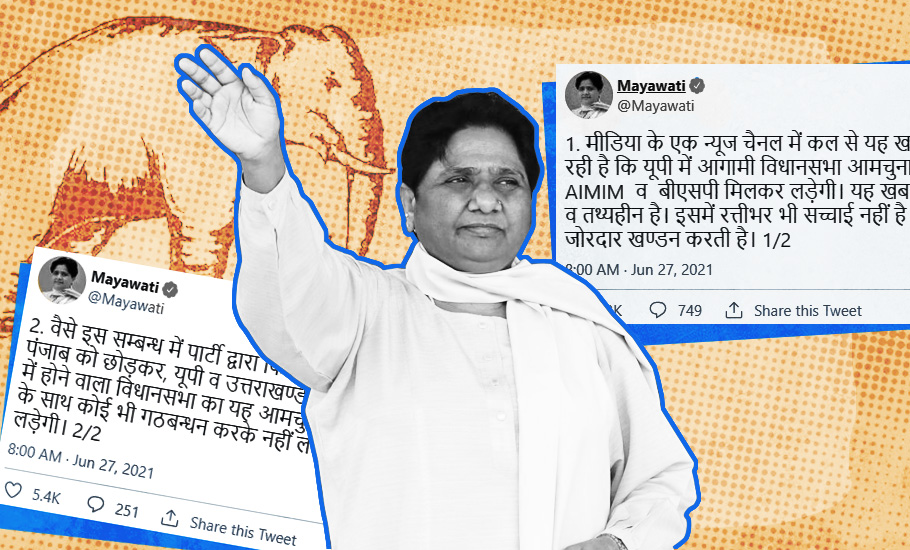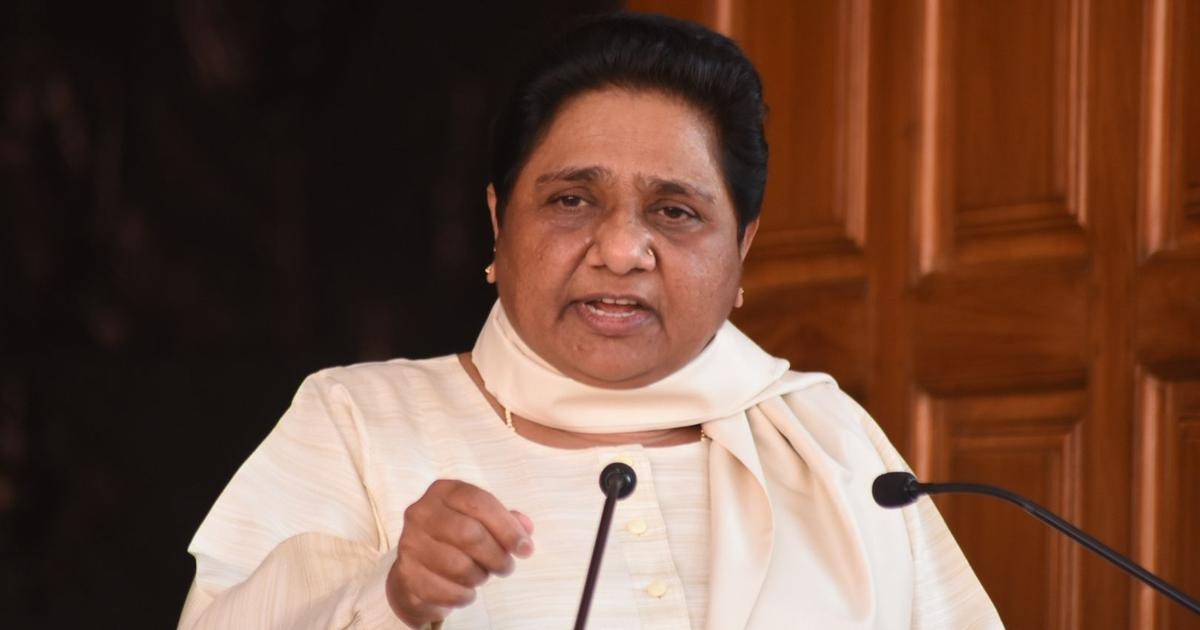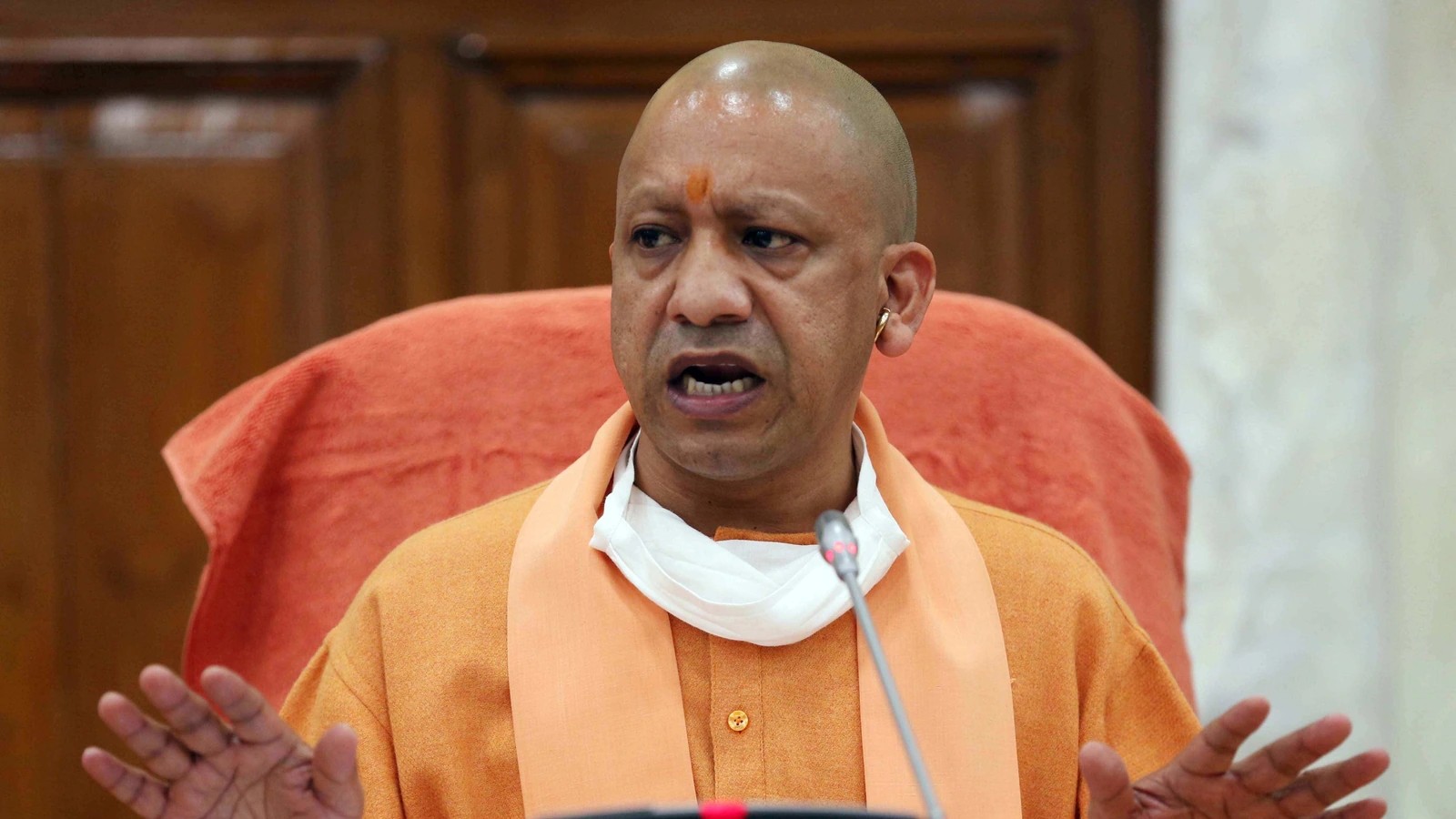
- Home
- News
- Analysis
- States
- Perspective
- Videos
- Education
- Entertainment
- Elections
- Sports
- Features
- Health
- Budget 2024-25
- Business
- Series
- Bishnoi's Men
- NEET TANGLE
- Economy Series
- Earth Day
- Kashmir’s Frozen Turbulence
- India@75
- The legend of Ramjanmabhoomi
- Liberalisation@30
- How to tame a dragon
- Celebrating biodiversity
- Farm Matters
- 50 days of solitude
- Bringing Migrants Home
- Budget 2020
- Jharkhand Votes
- The Federal Investigates
- The Federal Impact
- Vanishing Sand
- Gandhi @ 150
- Andhra Today
- Field report
- Operation Gulmarg
- Pandemic @1 Mn in India
- The Federal Year-End
- The Zero Year
- Premium
- Science
- Brand studio
- Newsletter
- Home
- NewsNews
- Analysis
- StatesStates
- PerspectivePerspective
- VideosVideos
- Entertainment
- ElectionsElections
- Sports
- Features
- BusinessBusiness
- Premium
- Loading...
Premium - India-Canada ties

Mayawati is not done throwing googly. But will BSP bounce back?

A series of tweets from Mayawati on June 27, in which she asserted that the BSP would go alone in 2022 assembly polls in Uttar Pradesh, has raised eyebrows in the political circles in the state. Of course, earlier too, BSP was known for shunning pre-poll alliances on the ground that while BSP votes were transferred to candidates of other parties, their votes were never polled for...
A series of tweets from Mayawati on June 27, in which she asserted that the BSP would go alone in 2022 assembly polls in Uttar Pradesh, has raised eyebrows in the political circles in the state.
Of course, earlier too, BSP was known for shunning pre-poll alliances on the ground that while BSP votes were transferred to candidates of other parties, their votes were never polled for BSP candidates.
The surprise this time is partly because this announcement comes within days of BSP entering into a pre-poll alliance with Akali Dal in Punjab, prompting people to wonder whether Mayawati had changed her policy on pre-poll alliances.
In fact, in UP itself, she had entered into a pre-poll alliance with the SP for the 2019 Lok Sabha polls. So to clear the confusion, in her tweets, she pointedly offered a clarification that Punjab was an exception and there would be no pre-poll alliance with any party in UP and Uttarakhand.
More importantly, this announcement from Mayawati came at a time when UP Chief Minister Yogi Adityanath’s political stock has visibly taken a nosedive. A Mahagathbandhan (Grand Alliance) of opposition parties in UP has been seen as a winning proposition. At least, a tie-up between BSP and Samajwadi Party (SP) would have high chances of dislodging the BJP from power, many still think. If the BJP loses UP, then its all-India prospects would also run into rough weather. But if BSP shifts its loyalty to the BJP camp, and its unusual Punjab gamble also clicks, the opposition’s hopes of cornering Modi would be belied. So, the political spotlight has naturally turned on Mayawati.
Another reason for the surprise at Mayawati’s tweets was her categorical denial of any chance of a pre-poll tie-up with Asaduddin Owaisi of AIMIM, the Hyderabad party that aims to bring all the Muslims in the country under its ambit. The vehemence with which she scotched these rumours indicated that she was averse to giving an impression of having taken a decisive position to be in the anti-BJP camp. In what looked like a retort against Mayawati’s denial, within a couple of hours of Mayawati’s tweet, Owaisi too responded with a tweet saying that the AIMIM would contest 100 seats in UP independently, thereby ruling out the chances of BSP winning over a sizable section of Muslim voters. Perhaps, Owaisi had also concluded that Mayawati was openly rejecting an alliance with AIMIM as an overture to the BJP.
Which way will Mayawati go in 2022?
The political circles are agog with rumours that Mayawati was gradually positioning herself in favour of a post-poll tie-up with BJP in the anticipation of the saffron party failing to get an absolute majority. Her tweet the very next day that her party would abstain from the election for zila panchayat presidents reinforced this impression. Although she claimed that this was a protest move against horse-trading and misuse of state machinery by the BJP to muster a majority, many saw it as a move to favour BJP candidates. BSP limiting its token support to farmers’ protest to mere statements and supporting Modi on scrapping Article 370 also contributed to this theory.

Senior TV news anchor Urmilesh tells The Federal, ”It is almost clear that the BSP has surrendered to the BJP although there is no pre-poll alliance with it.” He even goes on to say that all her political moves are dictated by the BJP.
Former district president of the SP in Allahabad, Sabiha Mohani also opined to Federal that, “Mayawati is still a formidable leader. Unfortunately, she has meekly surrendered to the BJP probably because of the debacle she faced in 2017 assembly polls”.
Existential crisis for BSP?
Anyway, the surprise moves of Mayawati could well be bargain manoeuvres to clinch a most advantageous post-election deal in the event of a hung assembly. But some observers also see an existential crisis for BSP driving these. The core voters of BSP, the dalits in UP comprise 20.8% of the population as per 2011 Census and among them Jatavs comprise 54% of the total dalits and 11.23% of the total state population. It is true that to the last Jatav, they remain totally loyal to Mayawati no matter what her macro political alliances are. But non-Jatav dalits were clearly moving towards BJP in 2019. And with just 11%, or even 21% of the voters behind her at best, she cannot hope to win a good number of assembly or parliament seats on this base alone.
Aware of this, in the 1990s, BSP founder Kanshi Ram originally became the architect of Dalit-Bahujan politics, the word Bahujan (Majority) indicating Most Backward Castes (MBCs), the Other Backward Castes (OBCs) and even a section of Muslims. On the basis of such a “social engineering”, there was a dalits-OBC alliance in 1993 and the SP-BSP government came to power. But such coalitions are brittle and do not remain durable despite the core voter base remaining a single bloc. This was especially so when the aggressive neo-rich peasant caste of Yadavs and dalit agricultural labourers were socially at loggerheads in the villages of Uttar Pradesh.
Mayawati walked out of this coalition government in 1995 only to form her own government with the BJP support. In 1996 assembly polls, BJP won 174 seats, 39 short of a majority and BSP had won 67 seats. Though Mayawati refused to support a BJP government, in April 1997, the BJP and BSP entered into a 6 monthly rotational CM arrangement under which Mayawati became the CM first and after her 6-month tenure, she ditched the BJP. The BJP managed to become the ruling party though through horse-trading. Thanks to anti-incumbency, in 2002 assembly polls, the BJP’s tally came down to a mere 88 seats. The love-hate relationship between BSP and BJP continued and Mayawati again became the CM in May 2002 with BJP support but it remained a troubled partnership and Mayawati resigned in August 2003. Mulayam Singh then became the CM with BSP support and continued as CM till 2007.
The upper caste, especially the Brahmins, were smarting under the violent and unabashedly Yadav caste-hegemonistic rule of the SP. But they lacked a solid political platform of their own at that time as the BJP at that juncture was down at the all-India level as well as in UP. Sensing their restlessness, Mayawati changed the composition of her social coalition and aimed for an alliance with upper castes, especially Brahmins, and came up with a new slogan of Sarvajan (all-inclusive) politics. This clicked and BSP came to power on its own albeit based on this dalit-Brahmin social coalition in 2007, winning 206 out of 403 seats.

Mayawati completed her 5-year term. In 2012, by projecting a relatively clean face of Akhilesh Yadav, the SP won 224 out of 403 seats and he too completed a full term. The 2017 assembly elections marked a qualitatively different political scene in UP. BSP could make no gains. There was a Modi wave in the wake of Pulwama. More importantly, the BJP too had indulged in social engineering and had stitched a social coalition of MBCs, non-Yadav OBCs and non-Jatav Dalits around an upper caste consolidation. BJP won a whopping 312 seats. This marked a qualitative new stage for BJP in UP.
The BJP wave
The BJP had first reached 31% vote share in 1991 thanks to the campaign for a Ram temple. In 1993 polls, held after the earlier Kalyan Singh government was dismissed due to Babri Masjid demolition, BJP’s vote share increased to 33%. Even Lord Ram could give them only 2% more. In 1996, its vote percentage declined marginally to 32%. But in 2002, BJP’s vote share fell drastically to 20% and thereafter it was a steady decline to 17% in 2007 and further to 15% in 2012. It however increased abnormally to 39.7% in 2017. This unusual swing of 24.7% votes in favour of BJP in UP in 2017 was not entirely due to ‘Modi magic’ but the main reason behind this rare electoral phenomenon was actually the new social coalition behind the BJP.
The MY (Muslim-Yadav combine) coalition which was the core of the SP’s electoral base could no longer exert a gravitational pull over the estranged non-Yadav OBCs and MBCs. The upper castes no longer required the BSP to take on the SP.
But after 5 years of Yogi’s rule, once again there is restlessness and disaffection among non-Yadav OBCs and MBCs towards BJP, especially towards Yogi. Even the Brahmins and other upper castes were cut up with him. Powerful Brahmin and upper caste BJP leaders like Brajesh Pathak, Satyadev Pachauri, Ravi Sharma, Jawaharlal Rajput, and Lokendra Singh etc., came out openly against Yogi’s handling of the Covid-19 crisis in UP. The RSS leaders and the BJP leaders themselves had to put up with him only because a viable alternative was not available.
It is at such a political juncture, Mayawati is positioning herself into a state where she would be open to a post-poll deal with the BJP. In other words, Mayawati practices a different version of “vote-bank politics”—using core dalit votes as a bargaining lever for pre- or post-poll social or political alliances. Whether her gamble would click this time remains to be seen.

